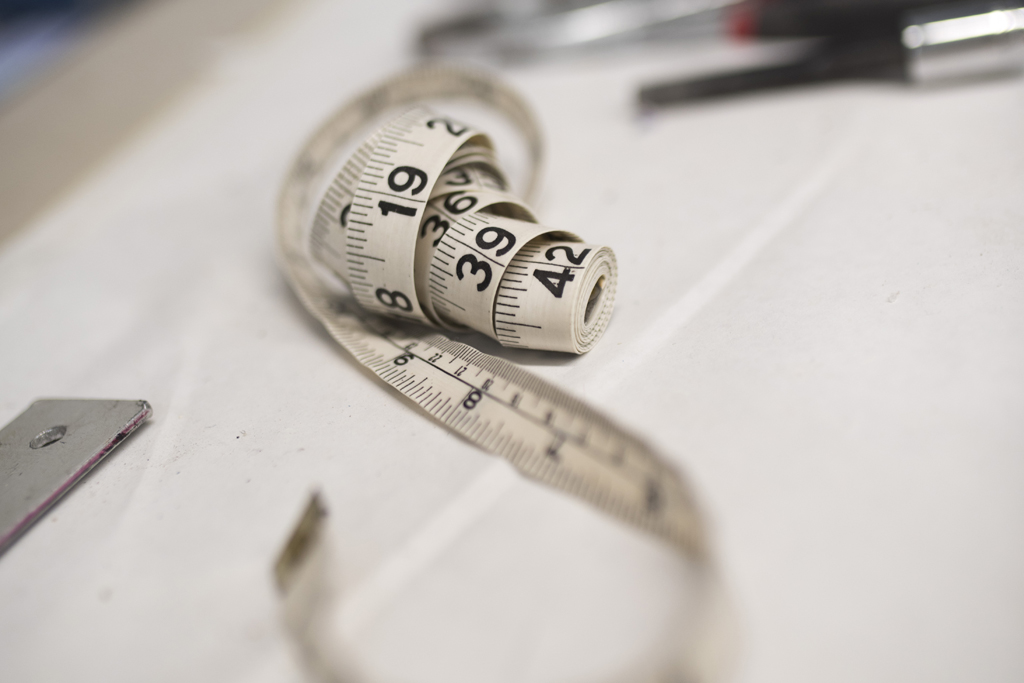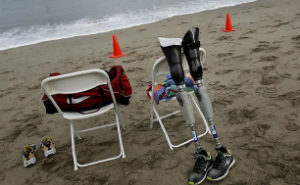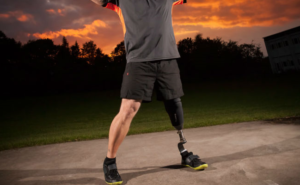A prosthesis is an artificial limb to help a person who has lost their leg or arm complete everyday activities — such as dressing, eating, or walking — and live independently. Advancements in prosthetic technology have made it possible for many people with a prosthetic limb to function almost as well as they did prior to losing their limb.
However, the usefulness of a prosthesis can be greatly impeded by a poor fit. A badly fitting prosthesis can cause a variety of problems, including pain, sores, blisters, and an increased risk of falls or other accidents. It can also cause a lot of frustration for the wearer as their daily tasks are made more difficult.
Factors Affecting a Prosthesis’ Fit
During the prosthetic fitting process, you will have to come back multiple times for adjustments to the fit, especially if you are a new amputee. Temperature, weight fluctuations, water retention, and a myriad of other factors can all cause minor changes that must be accounted for. Several visits are usually necessary before the device can be labeled as fitting properly.
There is also a pretty steep learning curve involved when someone is getting used to wearing a prosthesis for the first time. They may not be able to tell if the fit is good or not right away. Almost 60% of patients wear their prosthetics for more than 13 hours a day. The more you wear your prosthetic, the faster you will notice any problems with the fit because it can become painful quickly.
Another factor affecting the fit of your prosthesis is wearing out the socket (the part of the prosthesis attached to the residual limb). This can occur naturally over time as the prosthesis is used and friction is applied to the surface.
The Prosthesis Fitting Process
Each person is shaped uniquely, and each surgical site and residual limb will have a unique landscape requiring a perfect fit to avoid discomfort. Custom prosthetics are the best way to address your long-term needs and comfort.
When you come in to have your prosthesis fit, you will be measured, and a mold will be made of your residual limb. These measurements and molds are used to create a 3-D image of the residual limb. This impression is then used to create a prosthesis to exactly fit over your limb, keeping rubbing and pinching to a minimum.
Custom prosthetics are precisely customized and fabricated for each individual, taking into account your level of amputation, durability demands, functional needs, and any future physical changes.
The socket is the most critical component of your prosthesis because it comes into contact with your limb. Once your prosthesis has been created, a prosthetist will check to make sure it fits snugly — but not too tightly! — and your weight is evenly distributed across the surface of your residual limb. Even weight distribution helps eliminate pressure points that can eventually become painful sores and blisters.
What Are Prosthetics Made Of?
Prosthetics are made of a wide variety of materials and can include:
- Acrylic resin,
- Carbon fiber,
- Thermoplastics,
- Silicone,
- Aluminum, or
- Titanium.
Sometimes foam will cover these underlying materials and a flexible, skin-like covering can create a life-like appearance for your limb. Unfortunately, many insurances do not cover life-like limbs because they are not considered medically necessary. The patient is usually responsible for covering the extra cost of fabrication.
The type of material used to create your prosthesis will depend on which limb you are supplementing, what your durability needs are, what your insurance covers, and the suggestions of your surgeon and prosthetist.
What Is A Prosthetist?
A prosthetist is a healthcare professional trained to design, measure, and fabricate prostheses. A prosthetist must earn a master’s degree in orthotics and prosthetics and become a certified prosthetist (CP).
Becoming a certified prosthetist requires passing a series of exams and completing a residency. The degree, certification program, and residency must all be approved by the American Board for Certification in Orthotics, Prosthetics, and Perothics.
A practicing prosthetist must also complete ongoing continuing education (CE) to remain up to date on the latest technology, regulations, and practices in the field.
How Do Prosthetics Work?
Understanding how a prosthesis works may help you understand how they are fitted and why a good fit is so vital. The location of the amputation determines how many joints there are.
For instance, if you have an amputation above the elbow (transhumeral), you will need a prosthetic upper and lower arm connected by a prosthetic elbow joint. If your amputation is below the elbow (transradial), then you will only need a prosthetic forearm. A prosthetic knee or elbow is what allows the prosthetic limb to move in the same way a human limb moves.
Components of a Prosthetic Limb
A prosthesis consists of a limb, socket, suspension system, and control system. The limb is formed from durable, lightweight materials and replaces the length of the missing limb.
The socket connects the prosthesis to the residual limb. An ill-fitting socket can cause rubbing and discomfort. Horton’s Orthotics and Prosthetics offers custom prosthetics utilizing a personalized mold to create your prosthesis. This ensures the fit of the socket is perfect for you.
The suspension system makes sure the socket and limb remain secured to the residual limb. Elastic sleeves, self-suspending sockets, suction sockets, and harnesses are all examples of suspension systems.
Since a prosthesis cannot be controlled by nerve impulses in the brain, an artificial control system is necessary. Some are body-powered (for example, a prosthetic hand operated by cables and a harness), and others are controlled with electrodes (myoelectric).
The components of a prosthesis all work together to create movement and assistance as close to the missing limb as possible. When the prosthesis fits comfortably, you reach your optimum functionality more successfully.
For More Information About Arkansas Prosthetics
If you are looking for custom prosthetics in Arkansas, contact Horton’s Orthotics and Prosthetics online or call us at 501-214-4191 to schedule an appointment today! Our licensed prosthetists will make sure your prosthesis fits your body and your lifestyle.



